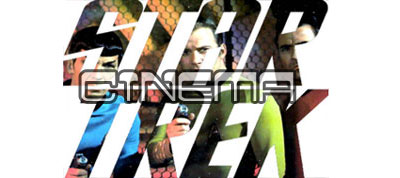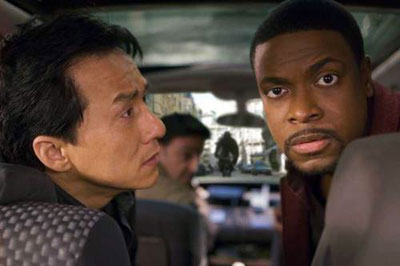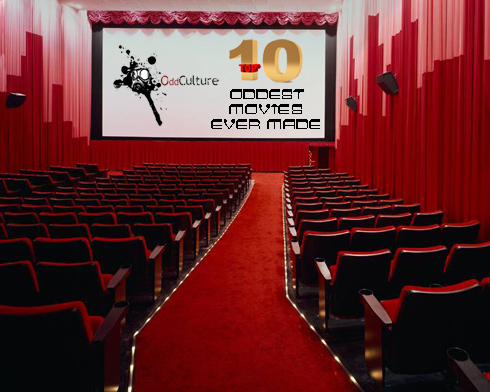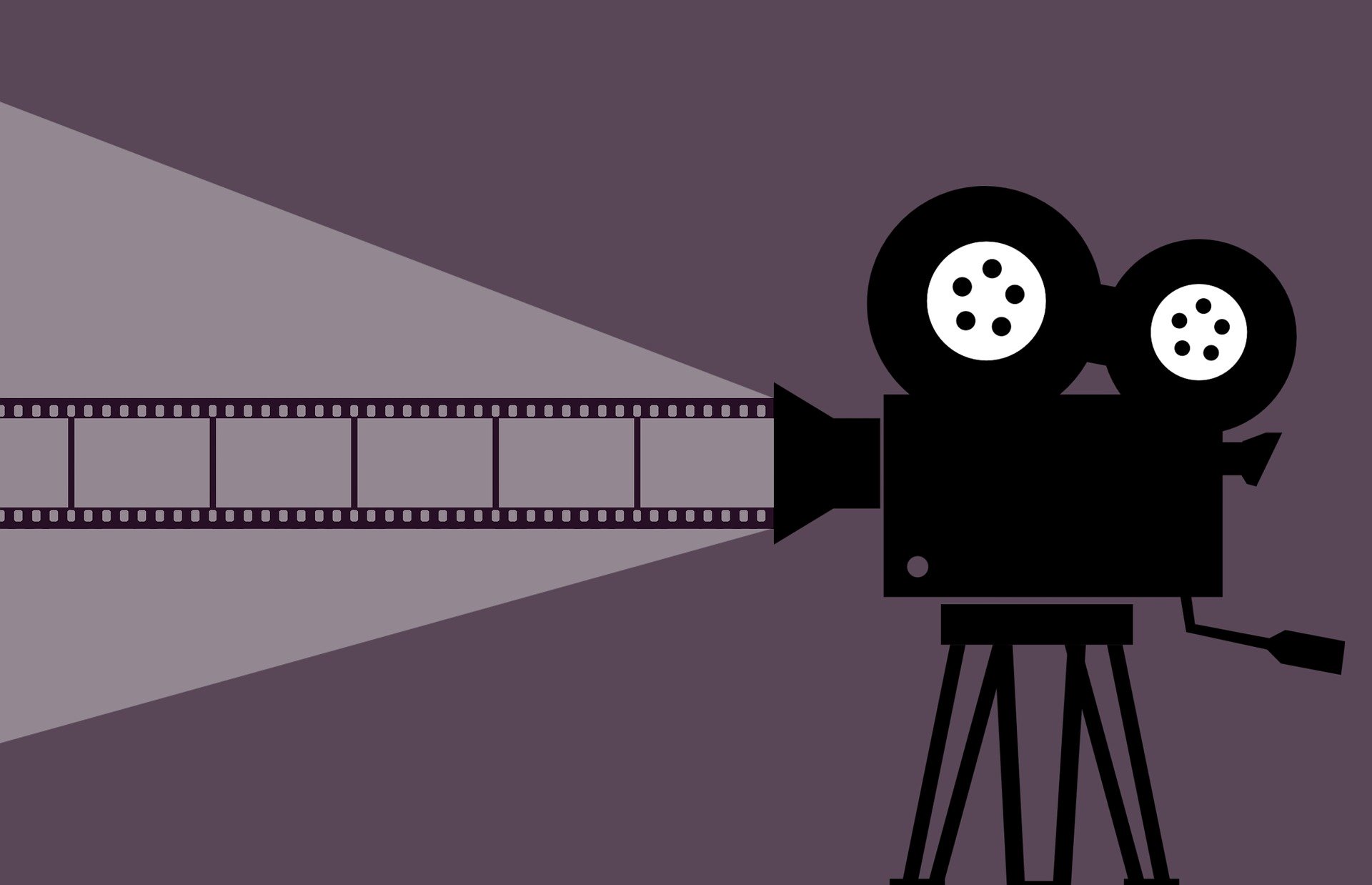Star Trek II: The Wrath of Khan (1982)
Directed by: Nicholas Meyer
Starring: William Shatner, Leonard Nimoy, DeForest Kelley, James Doohan, George Takei, Walter Koenig, Nichelle Nichols, Ricardo Montalban, Kirstie Alley, Bibi Besch, Merritt Butrick, Paul Winfield
![]()
![]()
![]()
![]() (out of 4)
(out of 4)
Warning: Spoilers Ahead
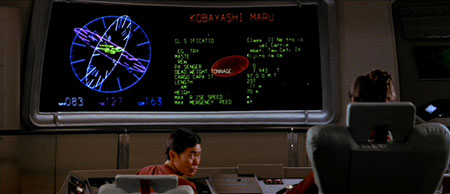
Sulu: Is this test based on the class notes?
Ah, Star Trek 2. The fine wine of the Trek franchise, the reliable Honda, the loyal golden retriever, the comfortable old shoes. Arguably the best of the cinematic Trek line in terms of quality, it has staying power because it understands that a good adventure movie must first have all the proper ingredients – action, suspense, heroism, sacrifice, themes of life and death. The “spice” that improves the dish comes out of an understanding of Roddenberry’s characters. Not a Trek fan at the start, producer Harve Bennett (brought in from the Paramount TV department) saw all the classic episodes to understand what he was dealing with. His homework paid off. A fan of literary classics (and author of The Seven-Per-Cent Solution) Nicholas Meyer was brought on board to direct, and he would give the film a naval feel that was only hinted at in the series.

You must tell me what you think of my soup! Be honest!
1979’s Star Trek: The Motion Picture was a box office success, taking home $139 million worldwide on a $35 million budget. (The $46 million budget commonly bandied about is a bit misleading, because it includes the cost of the Phase II development and the planned TV network). However, TMP was not a critical success. Too many people (critics and viewers alike) found it extremely dull (I do not). Let’s be honest here – the first film is basically too slow and cerebral for a post-Star Wars age. Meyer obviously was tasked with delivering something with some pizazz, and on only a third of the first film’s budget. Apparently, Gene Roddenberry had written a sequel involving JFK and the Guardian of Forever, but Paramount execs had no intention of letting him anywhere near Trek after the debacle of the first film, so they made him “executive consultant” to keep him out of production. Bennett was to take his place (when asked “Can you make it for less than forty-five-f*cking-million-dollars?” Bennett replied “Where I come from, I can make five movies for that.”)
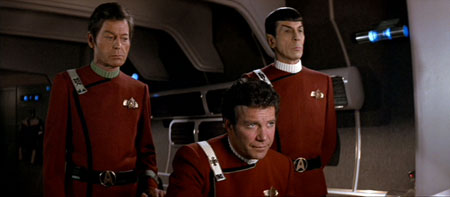
23rd century internet is dirtier than you can possibly imagine
The Trek universe is ripe with potential. You can take it in many directions. In this case, the creators of Trek 2 were to concentrate on character interaction and large emotional themes. The trick was to interweave the two, a job that Meyer and Bennett were to perform rather satisfactorily. When we start off, we see Kirstie Alley’s Lt. Saavik dragging the Enterprise across the Klingon neutral zone, which results in the death of the bridge crew. Only then do we find out that it’s all a simulation (The Kobayashi Maru), as Admiral James T. Kirk (Shatner) walks out warning Saavik that “Klingons do not take prisoners.” (This of course, was to be proven false in Star Trek 3). When we see Kirk, it’s his birthday and he is depressed as he faces the possibility that he is past his prime. (McCoy scolds him: “Damn it Jim, what the hell is the matter with you? Other people have birthdays, why are we treating yours like a funeral? “) Cut to a scene where First Officer Chekov (Walter Koenig) beams down to Ceti Alpha VI with Captain Terrell (Paul Winfield) doing planetary surveys for the scientists of space station Regula One. The scientists running Regula One include Carol Marcus (Bibi Besch) and her son David (Merritt Butrick). And, oh yes, David’s father happens to be a certain admiral who used to command the Enterprise back in the day. But let’s not get ahead of ourselves – through a mix-up, Chekov runs into Khan Noonien Singh, the genetic superman from 1996, who along with his merry band of genetically perfected followers proceed to take over the Federation starship Reliant. You may remember Khan from the TOS episode Space Seed, where he was brought out of suspended animation and later banished to Ceti Alpha V by Captain Kirk. Khan, in a rather hostile mood this time around, implants these really icky worm-like creatures in Chekov and Terrell’s brains, rendering them rather susceptible to “suggestion”.
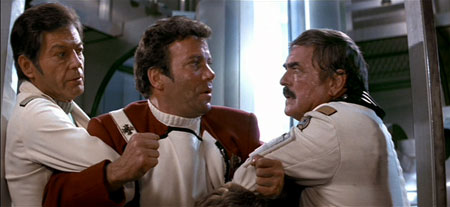
I'm afraid it's true, sir... I drank all the Romulan Ale!
All clear so far? It seems that Khan is quite pissed for being left on a dying planet, blaming Kirk for his wife’s death, and is out for revenge. As Khan defines it, revenge is a dish that is best served cold. It’s an old Klingon proverb – well, actually, it comes from the 18th century French novel Dangerous Liaisons, but that didn’t stop Quentin Tarantino from referencing it in Kill Bill
as Klingon in origin. Who am I to argue with QT? Anyway, Montalban plays Khan with this wonderful slow burn – it’s an intensity that occasionally gives way to short bursts of rage. Considering Meyer is a fan of Moby-Dick
, you will hear a lot of dialogue coming out of Khan’s mouth from said book, as Trek 2 rather blatantly makes the connection between Khan and Ahab, with Kirk (Enterprise) compared to the whale who tasks him. There are also plenty of Dickens references – A Tale of Two Cities
is given to Kirk by Spock as a birthday present, and the movie will be playing out some of its themes later. Khan is motivated mainly by vengeance, but as a bonus, he’ll take the Genesis device, devised by the scientists of Regula One, which is capable of wiping whole planets and reorganizing the life on them at incredible speeds. This leads to a nice scene where McCoy’s humanism is pitted against Spock’s cold logic. “You’re talking about universal Armageddon! You green blooded, inhuman…”

Khan, you little whippersnapper! Get off my property!
Before Star Trek II: The Wrath of Khan rolls the end credits, we will see a dogfight between two Federation ships, a meeting between Kirk and his son, and the sacrifice of an important character in one of the most emotional scenes in the entire history of Trek. The irony here is that Trek 2 is so obviously scaled down from the first movie in terms of special effects, set design, depth-of-field, etc., and yet its themes are more sweeping (like James Horner’s accompanying score) and more humanistic. The characters are closer to how we remember them from the original series; in Trek 2, Kirk really grows as a character – he is forced to deal with mortality head-on and emerges on the other side of the experience feeling “young”. The air of death (and rebirth) hangs over the film; its concepts are truest to the series philosophy (needs of the many outweighing the needs of the few, or the one – Star Trek 3 would turn that one on its head as well).
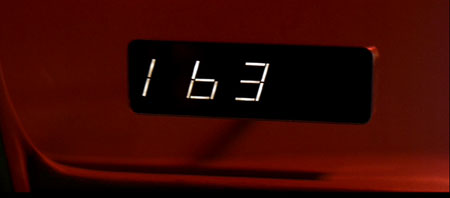
Nobody can ever break this impenetrable 23rd century access code!
I like the human touches in Trek 2 – Kirk comforting a distraught crewman, Kirk’s minor embarrassment at having to use his glasses during a battle scene, Spock closing his eyes in silent mourning of Scotty’s nephew… and I didn’t even mind that in the 23th century they still use “taped” recordings and that Federation starship bridges can be controlled with 5 digit encryption codes! It’s certainly apparent that Meyer and Bennett have taken the “Horatio Hornblower in space” motif as far as it can go (new military-style uniforms, nautical-like battles, gunboat diplomacy) and not have it be a case of 20th century lifestyles intruding on 23rd century reality. (Meyer reportedly wanted a “No Smoking” sign on the bridge. It doesn’t occur to him that smoking may be gone in a few hundred years – perhaps earlier at the rate it’s being banned around the world). This would be a bit of a problem in Star Trek 6, but I’ll photon-torpedo that bridge when I come to it. In the meantime, this is the movie to show the Trek newbies or anyone looking for a good space adventure (it might make a good companion piece to Star Wars Episode IV – A New Hope). Star Trek II: The Wrath of Khan is lean, stirring, operatic, and fun.
– Bill Gordon
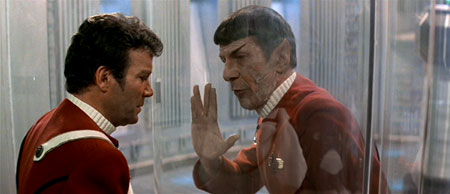
I'm dying here... can you at least get the Vulcan greeting right this time?
